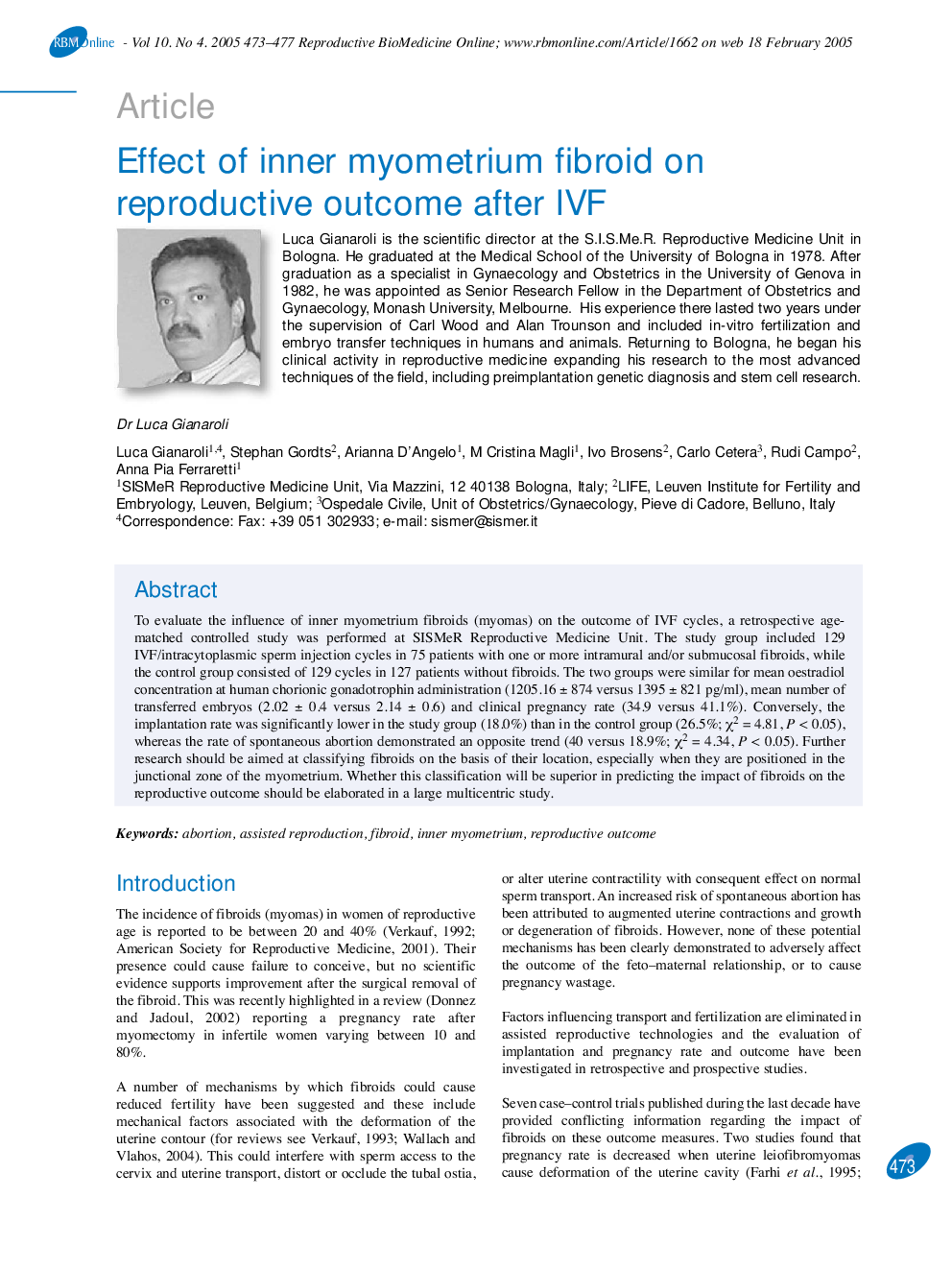| Article ID | Journal | Published Year | Pages | File Type |
|---|---|---|---|---|
| 9334726 | Reproductive BioMedicine Online | 2005 | 5 Pages |
Abstract
To evaluate the influence of inner myometrium fibroids (myomas) on the outcome of IVF cycles, a retrospective age-matched controlled study was performed at SISMeR Reproductive Medicine Unit. The study group included 129 IVF/intracytoplasmic sperm injection cycles in 75 patients with one or more intramural and/or submucosal fibroids, while the control group consisted of 129 cycles in 127 patients without fibroids. The two groups were similar for mean oestradiol concentration at human chorionic gonadotrophin administration (1205.16 ± 874 versus 1395 ± 821 pg/ml), mean number of transferred embryos (2.02 ± 0.4 versus 2.14 ± 0.6) and clinical pregnancy rate (34.9 versus 41.1%). Conversely, the implantation rate was significantly lower in the study group (18.0%) than in the control group (26.5% Ï2 = 4.81, P < 0.05), whereas the rate of spontaneous abortion demonstrated an opposite trend (40 versus 18.9% Ï2 = 4.34, P < 0.05). Further research should be aimed at classifying fibroids on the basis of their location, especially when they are positioned in the junctional zone of the myometrium. Whether this classification will be superior in predicting the impact of fibroids on the reproductive outcome should be elaborated in a large multicentric study.
Related Topics
Health Sciences
Medicine and Dentistry
Obstetrics, Gynecology and Women's Health
Authors
Luca Gianaroli, Stephan Gordts, Arianna D'Angelo, M Cristina Magli, Ivo Brosens, Carlo Cetera, Rudi Campo, Anna Pia Ferraretti,
